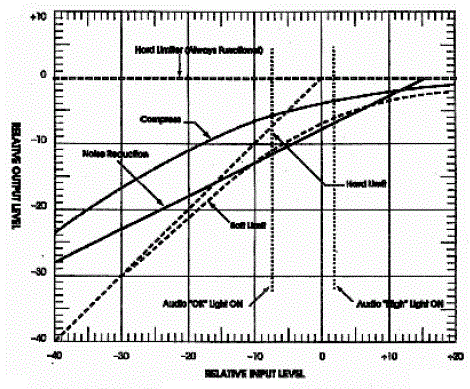2.2.4 Issues
* While theoretically, an FM receiver from one manufacturer can be employed with a transmitter made by a different company, the reality is a bit more complex. As pointed out earlier, companies design their transmitters and receivers as a unit, to work together. Although several FM receivers can be tuned to any of the 10 wide or 40 narrow bands available, other factors, such as the selectivity and power of the FM receivers, may still affect the quality of the reception with different FM transmitters. The recommendation had been made that only standard transmitting frequencies with standardized electrical characteristics be used in all ALS. This would, theoretically, permit consumers to utilize their own personal FM receiver in any venue. However, this led to the objection that this requirement would stifle creativity and future developments. At the present time, it appears more feasible and realistic to stress flexibility in receiver options than to require standardized transmitter characteristics.
* FM systems are subject to interference from other radio sources. While using a frequency scanner can help select a "clean" frequency at the time of installation, there is no assurance that the channel would remain clean at a later time. If the transmitting frequency is changed, this requires that the tuning of the receivers be changed accordingly (not always possible or easy, see below). Wide-band receivers are more likely to pick up radio interference and cannot be used in as many adjacent venues (e.g. a multiplex theater complex) as narrow-band frequencies. On the other hand, the acoustical output from a wide-band receiver is somewhat superior to that emanating from a narrow-band receiver, but it is an open question whether this difference has any real-world significance for hard of hearing people. We know of no evidence that supports or refutes the listening advantages of either wide or narrow band channels for hard of hearing people.
* Many FM transmitters are capable of being adjusted to provide a range of preprocessing possibilities. This was one of the recurring issues discussed in the manufacturer's focus group, and applies not just to FM systems but to IR and IL systems as well. The general recommendation was that the transmitted signal be "as pure" as possible, with processing used to maximize speech intelligibility (as opposed other types of sound stimuli such as orchestral music). However, because the dynamic range of some audio sources can exceed 80 dB, or far beyond the dynamic range of just about everybody with a significant hearing loss, it appears necessary to provide some compression in the transmitter to keep from overloading the system and to ensure at least some audibility for low-level input sounds.
* Given the range of possible pre-processing strategies and the different venues and populations that would be using the ALS, it is necessary to develop and support a rationale for selecting one particular strategy over another. At the present time, each manufacturer provides its own instructions to installers regarding the necessity for a particular processing strategy. Further complicating the situation, what may be suitable in one situation and for one type of listener may not be optimal in another venue for other types of listeners. Some FM transmitters include choices for different amounts of high pass filtering, single or multiple band transmission, high frequency pre-emphasis, and different parameters of compression and modes of output limiting. Whatever rationale is developed, it is likely that the final decision would be made "on site" by a trained installer (meeting, it is assumed, the output electroacoustic recommendations that will be presented below). An example of the processing choices that is available can be seen in figure 9.

Figure 9. Audio processing possibilities with the Williams T−20 transmitter* used with permission

User Comments/Questions
Add Comment/Question